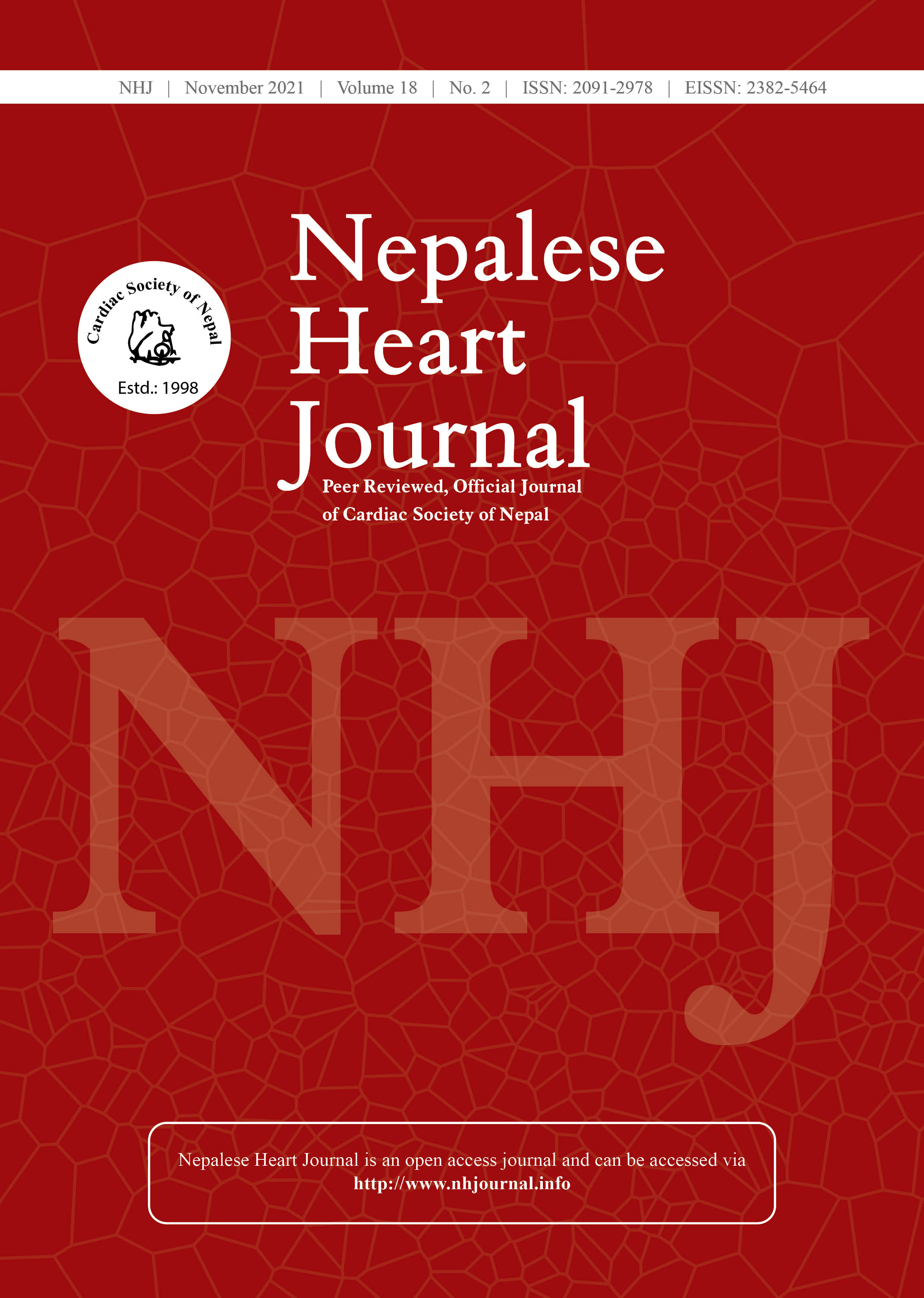Is Two Dimensional Echocardiography sufficient for selection of device for successful transcatheter closure of Patent Ductus Arteriosus in Children?
DOI:
https://doi.org/10.3126/njh.v18i2.40404Keywords:
Device, Echocardiography, Patent ductus arteriosus, transcatheter closureAbstract
Background and Aims: Two dimensional transthoracic echocardiography (2DE) is widely used for detecting congenital heart disease and is possible to obtain precise measurement of Patent ductus arteriosus (PDA) for device selection required for transcatheter closure. Primary aim of the study is to determine whether echocardiographic assessment alone can be used for selection of device for transcatheter closure of PDA.
Methods: Children with PDA and planned for transcatheter intervention were included in this cross-sectional study of one year. PDA was assessed with 2DE and prediction of device size was made.
Results: The results were obtained from 107 children. The median age and weight at intervention were 3.8 years (ranging from 6 months to14 years) and 12 kg (ranging from 3.5 to 60 kg). Type A (Conical) PDA was the commonest PDA morphology accounting for 87.8% and 85% in 2DE and angiography respectively. There was no difference (p < 0.05) in the narrowest diameter at pulmonary end measured by 2DE and angiography, however ampulla diameter and ductal length were statistically different (p = 0.95). The predicted size of device by 2DE was discordant (p < 0.05) to the actual device used in a total study population, however when patients with severe pulmonary hypertension, non-type A and larger PDA (narrowest diameter > 6mm) were excluded, the predicted size of device by 2DE was statistically concordant (p = 0.1) to the actual device used in 89 (83%) patients.
Conclusion: Two dimensional Transthoracic echocardiography alone may be helpful in choosing the device during transcatheter closure of PDA in selective group of patients.
Downloads
Downloads
Published
How to Cite
Issue
Section
License
Copyright (c) 2021 Nepalese Heart Journal

This work is licensed under a Creative Commons Attribution 4.0 International License.
This license enables reusers to distribute, remix, adapt, and build upon the material in any medium or format, so long as attribution is given to the creator. The license allows for commercial use.




